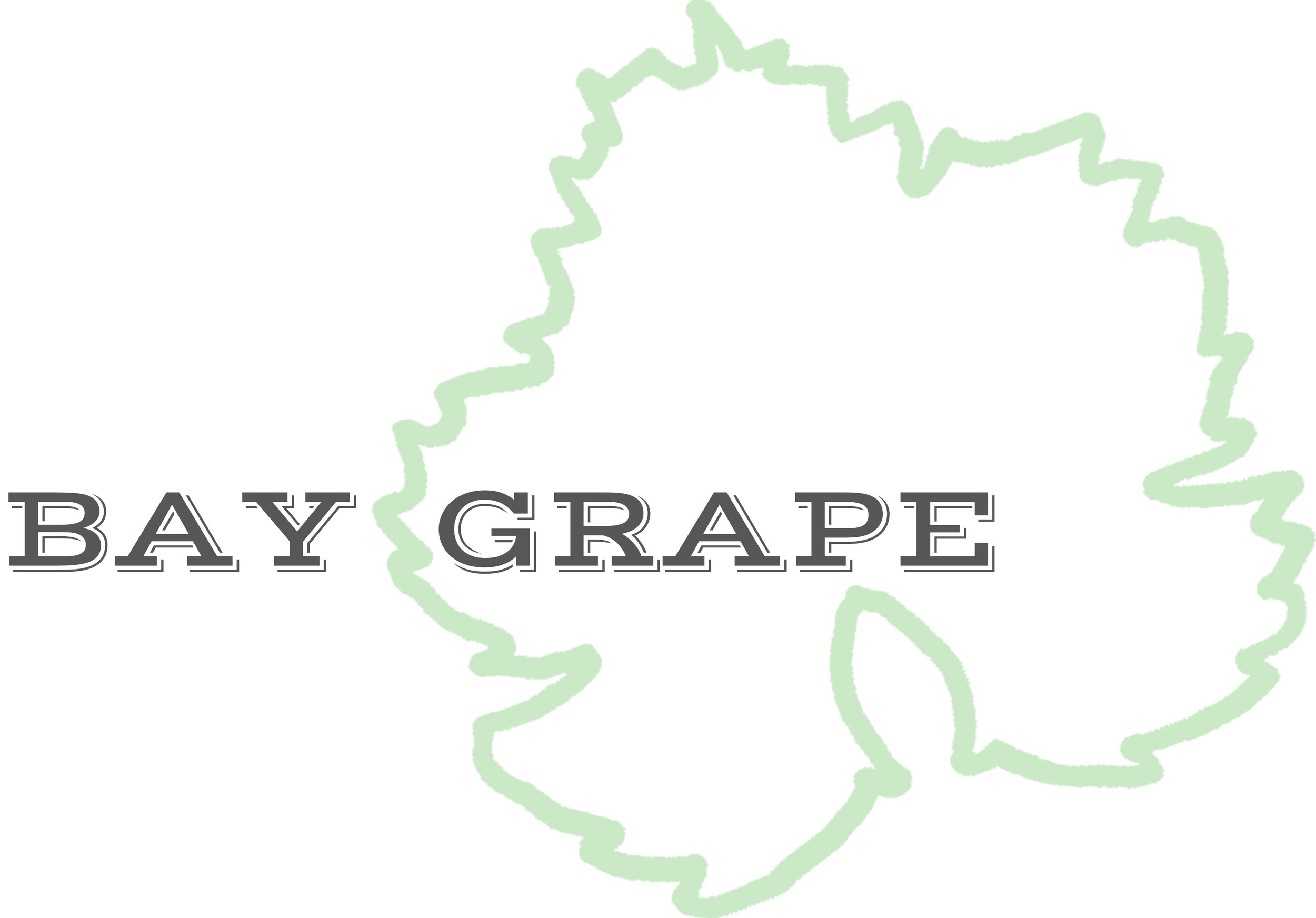Rising star pop-up tasting room calendar
Each month, our shop highlights a different small, local California winemaker by acting as a pop-up tasting room, exclusively featuring their wines by the flight or glass. Drop in anytime all month to taste and discover!
April 1-30: fine disregard wine co.
Mike Schieffer and Kara Maraden
We are excited to share this winemaking duo with all of you. We got a tip from one of our long-time club members about this company. Once we tasted it was unanimous amongst the Bay Grape team to bring these wines in for our featured producer pop-up tasting room.
“The personal project of Mike Schieffer and Kara Maraden. Our focus is making wines that reflect California and its rich viticultural history. We seek out compelling vineyards (often old vines planted in interesting soils, preferably farmed organically), and practice a philosophy of minimal intervention in all of our winemaking. We hope you enjoy the wines that are a result of this commitment.”
FEATURED WINES
$22 - Flight of all three wines
2020 Semillon May Vineyard $17/gl ~ $46/bottle to go
12.3% ABV ~ white ~ medium body
VINEYARD: The 2020 Napa Valley Semillon was sourced from a block of thirty year old vines planted in Napa Valley’s Oak Knoll District. Because of runoff from the nearby Vaca Mountains, the soils here are more alluvial than most of the AVA. Daytime temperatures are also typically ten degrees cooler than farther up valley due to the moderating influence of San Pablo Bay. Interestingly, scattered throughout the block are examples of what may be a pink skinned mutation of Semillon that’s known as the Madeira Clone in South Australia.
WINEMAKING: Fruit was whole cluster pressed and settled in tank for twenty-four hours. The juice was then barreled down into used and neutral French oak (228L barriques). Both primary and malolactic fermentation were spontaneous while additions focused on yeast nutrients as they were needed (our winemaking is intentionally “lo-fi”, eschewing watering back and acidulation). A light lees stirring preceded MLF, after which the wine spent fourteen months sur lie before bottling.
2019 Carignane Mule Plane $17/gl ~ $46/bottle to go
13% ABV ~ red ~ medium body
VINEYARD: The 2019 Mule Plane Carignane is sourced from own rooted, head trained vines planted in the late1920’s near the Mokelumne River in Lodi. The soils are well draining Sandy Tokay Loam and the vineyard benefits both from its immediate proximity to the Mokelumne (1300 feet) as well as its exposure to the cooling breezes of the California Delta. John Shinn’s family has farmed Mule Plane for more than four generations; they named the vineyard in honor of the mule drawn plane used by his grandfather’s uncle to level the ground prior to planting.
WINEMAKING: Fermentation was 100% whole cluster and spontaneous for both primary and malolactic. Gentle pumpovers were used to optimize extraction. Additions focused solely on yeast nutrients as they were needed, eschewing watering back and acidulation. After ten days on skins, the wine was pressed into neutral Burgundy barriques for a fourteen month sur lie elevage. It was then bottled unfined and unfiltered.
2022 Chenin Blanc Chalone $18/gl ~ $48/bottle to go
12.9% ABV ~ white ~ light body
VINEYARD: The 2022 Chalone Vineyard Chenin Blanc was sourced from vines planted in1919 in the Gabilan Mountains of Monterey County by Lucius Charles Tramm. The vines were planted in a unique combination of limestone, decomposed granite, and underlying volcanic material (one of the only places worldwide featuring the three). As importantly, at an elevation of 1800’, they are greeted by an evening marine layer that regularly cools nighttime temperatures over 50°F from their daytime highs. In 2022, frost events hit the old vine Chenin on two separate occasions, dropping yields to a scant 0.7 tons per acre and producing clusters smaller than the fist sized clusters typically found in the block.
WINEMAKING: After the fruit was whole cluster pressed, the juice was barreled down into neutral 228 L barriques (both French oak). Fermentation took place in the same barrels, which was spontaneous for both primary and malolactic. Additions focused on yeast nutrients only as they were needed (our winemaking is intentionally “lo-fi”, eschewing watering back and acidulation). The wine was given a light stirring of the lees to induce malolactic fermentation and aged fourteen months sur lie before bottling.

